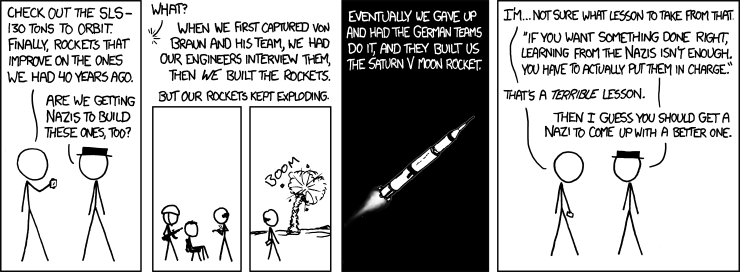Meet the Newly Approved Rocket That Will Take People To Mars
The approval of the Space Launch System is an important step for NASA
/https://tf-cmsv2-smithsonianmag-media.s3.amazonaws.com/filer/f6/da/f6da56e6-ac6b-4f5b-8996-f4de8b111582/08_28_2014_nasa_sls.jpg)
NASA will soon, finally, have a way to send its own people to space. And not just space: deep space.
Yesterday NASA announced that it had decided to go full steam ahead with the proposed Space Launch System (SLS) program, a heavy-lift rocket designed to carry people, eventually, to Mars.
The decision to move SLS from “formulation to development,” says NASA, is “something no other exploration class vehicle has achieved since the agency built the space shuttle.”
It's not much of a secret that NASA, long the frontrunner in human spaceflight, has been in a bit of an awkward spot for the past few years. The retirement of the Space Shuttle program left NASA without a way to transport humans into near Earth orbit, leaving the entire American human spaceflight program susceptible to political whims and the progress of private contractors.
But long before the Space Shuttle ever came and went, America's ability to send humans far out in to space took a blow. The cancellation of the Saturn V rocket program after the end of the Apollo missions left the U.S. without a heavy-lift rocket, something that could transport people beyond Earth orbit. In the mid-2000s NASA was working on the Constellation program to replace the Shuttle, but it was canceled because of budget problems.
The newer SLS rocket was first announced back in 2011, but since then the design has been going through a thorough review process. With yesterday's approval, the rocket is now ready for its next steps. The first test flight, an unmanned mission, is slated for 2018.
The SLS program is an important one for NASA, and for America, for more than one reason:

/https://tf-cmsv2-smithsonianmag-media.s3.amazonaws.com/accounts/headshot/smartnews-colin-schultz-240.jpg)
/https://tf-cmsv2-smithsonianmag-media.s3.amazonaws.com/accounts/headshot/smartnews-colin-schultz-240.jpg)